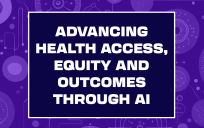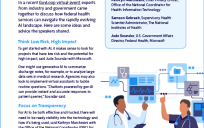 EMS provider organizations, to include 9-1-1 communications centers, non-transport medical first response agencies (typically fire departments), and ambulance services provide important interventions in the earliest phases of high-risk time-sensitive medical conditions like cardiac arrest, major trauma, stroke, and heart attack. Hospitals then take over from EMS until patients are ready to go home. Therefore, EMS and hospitals share accountability for patient outcomes on these cases. Carefully coordinated efforts between all of the EMS provider organizations and hospitals in the community are necessary to consistently achieve the best possible outcomes.
EMS provider organizations, to include 9-1-1 communications centers, non-transport medical first response agencies (typically fire departments), and ambulance services provide important interventions in the earliest phases of high-risk time-sensitive medical conditions like cardiac arrest, major trauma, stroke, and heart attack. Hospitals then take over from EMS until patients are ready to go home. Therefore, EMS and hospitals share accountability for patient outcomes on these cases. Carefully coordinated efforts between all of the EMS provider organizations and hospitals in the community are necessary to consistently achieve the best possible outcomes.
Establishing the necessary processes to coordinate complex care across all of these organizations doesn’t happen without considerable effort. But all too commonly, there isn’t an appropriate venue where the all of the provider organizations in the continuum of emergency care can get together to talk about system performance issues and work collaboratively to make the overall system better. Everybody tends to work in their own silo. Without a systems perspective, care for time-sensitive emergencies can be seriously compromised. Hospitals capabilities and capacities can get out of balance with community needs. Ambulance destination policies might not bring the result in getting the right patient to the closest appropriate hospital in the right time frame. Data might not get aggregated across EMS providers and hospitals to see how the overall system is performing. Without accurate measures of system-level performance, systems-level improvement can be extremely difficult, and expensive, to achieve.
Unfortunately, it’s usually not very easy to get all of the right executive level decision makers into the same room at the same time from to have some difficult, but necessary conversations about system-level policies.
Those difficult conversations for 9-1-1- communications centers, ambulance services and fire rescue agencies might be about establishing closest unit response policies that disregard jurisdictional boundaries for the most high-risk time-sensitive cases. Agency interests in preserving their call volumes, revenues, and jurisdictional sovereignty are real barriers. Sometimes just plain old institutional ego and resistance to change can get in the way of optimizing the systems of care.
Difficult conversations for hospital administrators might include things like ambulance destination protocols, which might have their hospital bypassed in favor of other hospitals that are better equipped for patients meeting certain criteria. This can be especially difficult when those patients have conditions associated with significant revenues.
This is where senior appointed and elected officials can play a crucial role – by using their political influence to bring together senior executive level decision makers who can make commitments about the topics that these often difficult conversations need to address – and to commit their organizations to actively participate in and support on-going meetings at a more operational level for systems-level quality improvement and policy-making efforts.
Once senior appointed or elected officials have brought the executives together, a key to moving those difficult conversations forward is to have everyone agree to one important ground rule – that decisions be driven first and foremost by patient and community interests.
The meeting might start off with an acknowledgment that there will be some difficult issues they need to address that can impact the financial and political interests of the parties. With an acknowledgment of that reality, the group can come to the realization that the most politically defensible and ethical position to take is that patient and community interests in decision making will supersede any provider organization’s financial and political interests. Doing anything short of that will not pass a sniff test.
A second element of the conversation, which can be introduced in the invitation to attend the meeting, is the scope of the initiative. To avoid squandering the opportunity to make as progress as possible, consider using this opportunity to address the full scope of high-risk time-sensitive conditions. In many cases, the community or region may already have separate systems of care committees for some of the time-sensitive conditions – maybe trauma and heart attack for example. Instead of these groups continuing to operate in silos, they’re brought into the consortium. They can retain their general structure and control of their projects – but agree to address issues that are common across multiple conditions in collaboration with the other time-sensitive condition committees – and share their knowledge and experience to improve things across the board. This creates and an opportunity to leverage what was accomplished in one area and apply it to other time-sensitive conditions.
This type of initiative can be a very visible and impactful way for local political leaders to catalyze meaningful positive change in their communities – at little to no additional cost to taxpayers.
Mic Gunderson is a GovLoop Featured Contributor. He has been involved in emergency healthcare for over 40 years in various leadership, educational, and clinical roles. Currently, he is the President of the Center for Systems Improvement where he provides consulting and training services related to emergency systems of care and EMS systems. Read his posts here.





Leave a Reply
You must be logged in to post a comment.